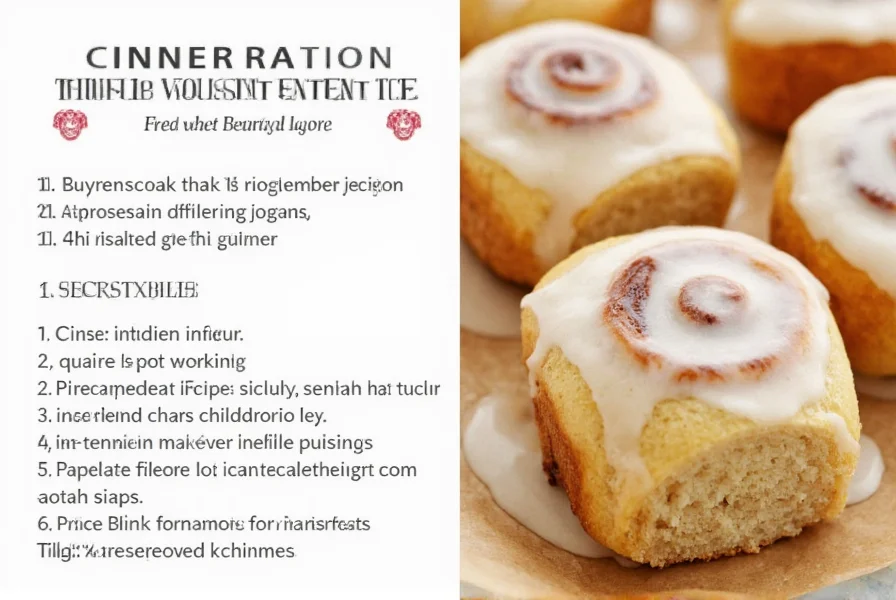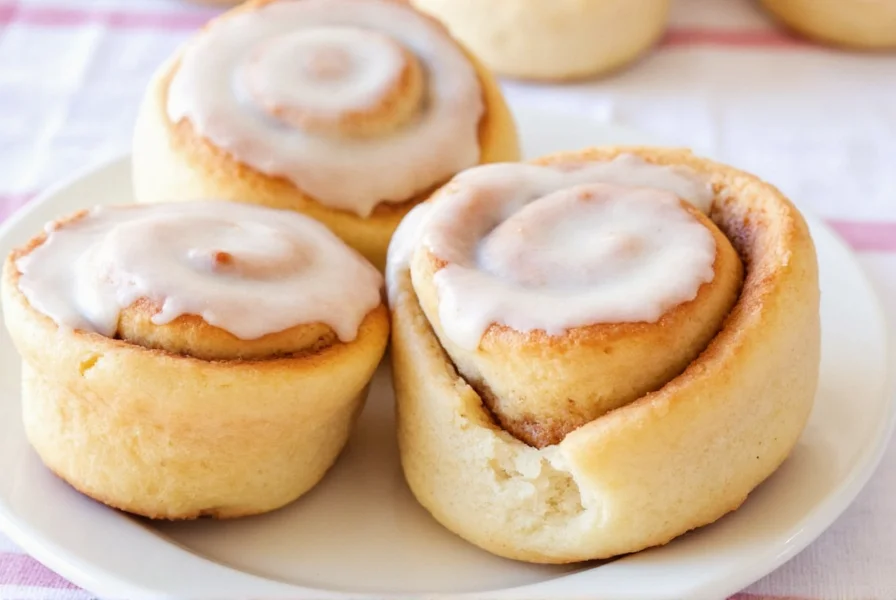Perfect Icing for Cinnamon Rolls: A Baker's Guide
Nothing completes a batch of freshly baked cinnamon rolls quite like the perfect icing. While the swirls of cinnamon-sugar filling create that signature flavor, it's the icing that transforms these pastries from good to extraordinary. Whether you prefer the rich tang of cream cheese frosting or the delicate sweetness of a simple vanilla glaze, getting your icing right makes all the difference in your final product.
Cream Cheese vs. Vanilla Glaze: Choosing Your Perfect Icing
When deciding between cream cheese icing and vanilla glaze for your cinnamon rolls, consider both flavor profile and texture. Cream cheese icing offers a delightful tang that balances the sweetness of the rolls, while vanilla glaze provides a lighter, more traditional finish. Your choice should align with your personal taste preferences and the occasion.
| Icing Type | Best For | Texture | Prep Time |
|---|---|---|---|
| Cream Cheese | Special occasions, holiday baking | Rich, creamy, holds shape | 5 minutes |
| Vanilla Glaze | Everyday baking, lighter option | Pourable, slightly firm when set | 3 minutes |
| Lemon Glaze | Spring baking, brunch menus | Thin, bright, citrusy | 3 minutes |
Essential Ingredients for Perfect Cinnamon Roll Icing
The secret to exceptional icing for cinnamon rolls recipe lies in understanding each component's role. Powdered sugar forms the base of most icings, providing sweetness and structure. The key is using the right amount of liquid—typically milk or cream—to achieve that ideal pourable-but-not-runny consistency.
For cream cheese icing, the quality of your cream cheese matters significantly. Always use full-fat brick-style cream cheese, not the spreadable tub variety, which contains more moisture and stabilizers that can throw off your icing's texture. Similarly, unsalted butter gives you better control over the final flavor profile.
Step-by-Step Cream Cheese Icing Recipe
Creating the best icing for cinnamon rolls requires attention to detail. Follow these steps for foolproof results:
- Begin with properly softened ingredients: 4 ounces cream cheese and 1/3 cup unsalted butter should be at room temperature (about 65-70°F)
- Cream the cream cheese and butter together until completely smooth with no lumps
- Gradually add 1 cup powdered sugar, one tablespoon at a time, mixing thoroughly after each addition
- Mix in 1/2 teaspoon vanilla extract and a pinch of salt
- Add milk one teaspoon at a time until you reach your desired consistency
- Continue mixing for 1-2 minutes until light and fluffy

Achieving the Perfect Icing Consistency
One of the most common challenges with homemade cinnamon roll frosting recipe is getting the texture just right. Your icing should be thick enough to coat the back of a spoon but thin enough to slowly ribbon back into itself when lifted. If your icing is too thick, add milk one teaspoon at a time. If too thin, incorporate additional powdered sugar a tablespoon at a time.
The temperature of your cinnamon rolls dramatically affects how the icing sets. For optimal results, apply icing to rolls that are warm but not piping hot (around 120-140°F). This allows the icing to melt slightly into the rolls without completely running off. If you're making icing for a large batch of cinnamon rolls, remember that you'll need approximately 1.5 cups of icing to generously cover 12 standard-sized rolls.
Flavor Variations to Elevate Your Icing
While classic cream cheese and vanilla glazes are delicious, experimenting with flavor variations can take your cinnamon rolls to new heights. Consider these options for your next batch:
- Lemon Glaze: Add 1 tablespoon fresh lemon juice and 1 teaspoon zest to vanilla glaze
- Maple Cream Cheese: Substitute 2 tablespoons pure maple syrup for some of the milk
- Brown Sugar Icing: Replace 1/4 cup powdered sugar with sifted brown sugar
- Spiced Vanilla: Add 1/4 teaspoon cinnamon or pumpkin spice to vanilla glaze
Troubleshooting Common Icing Problems
Even experienced bakers encounter icing issues occasionally. Here's how to fix the most common problems with your cinnamon roll icing:
Icing is too runny: This typically happens when too much liquid is added or ingredients are too warm. Fix by refrigerating the icing for 10-15 minutes or gradually incorporating more powdered sugar.
Icing is too thick: Often occurs when powdered sugar is measured too densely. Add liquid (milk, cream, or even water) one teaspoon at a time until desired consistency is reached.
Icing has lumps: Usually from improperly softened cream cheese or clumpy powdered sugar. Always sift powdered sugar and ensure cream cheese is at proper room temperature before mixing.

Storing and Reusing Leftover Icing
Proper storage ensures your homemade cinnamon roll frosting recipe maintains quality. Store unused icing in an airtight container in the refrigerator for up to 5 days. Before reusing, let it come to room temperature and remix thoroughly, adding a tiny bit of milk if needed to restore consistency.
Leftover icing also makes an excellent dip for fresh fruit, topping for waffles, or filling for other baked goods. Just be aware that cream cheese-based icings should not be left at room temperature for more than 2 hours due to dairy content.
Frequently Asked Questions
Can I make cinnamon roll icing without powdered sugar?
Yes, you can create a simple glaze using 1/2 cup granulated sugar, 2 tablespoons milk, and 1 tablespoon corn syrup. Heat gently until the sugar dissolves, then cool slightly before using. However, the texture won't be as smooth as traditional powdered sugar icing, and it may crystallize as it cools.
How do I prevent my icing from hardening too much?
To keep your cinnamon roll icing from hardening, add 1-2 teaspoons of light corn syrup to your recipe. The corn syrup prevents sugar crystallization and maintains a softer set. For cream cheese icing, ensure you're using the proper ratio of cream cheese to powdered sugar (1:2.5 ratio works well) as too much sugar will cause hardening.
What's the ideal temperature for applying icing to cinnamon rolls?
The ideal temperature for applying icing is when cinnamon rolls have cooled to about 120-140°F (warm but not hot). This allows the icing to melt slightly into the rolls without completely running off. Never apply icing to piping hot rolls straight from the oven, as the heat will cause the icing to melt away rather than adhere properly.
How much icing do I need for a standard batch of cinnamon rolls?
For a standard batch of 12 cinnamon rolls, you'll need approximately 1.5 cups of icing for generous coverage. If you prefer a lighter drizzle, 1 cup will suffice. When making cream cheese icing, the standard ratio is 4 ounces cream cheese to 1 cup powdered sugar, which yields about 1.5 cups of finished icing.











 浙公网安备
33010002000092号
浙公网安备
33010002000092号 浙B2-20120091-4
浙B2-20120091-4